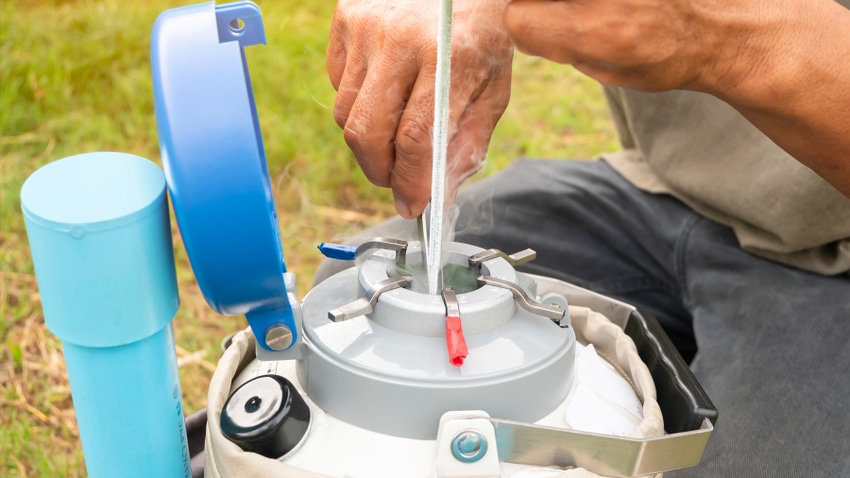April 12, 2023

Reproductive efficiency can help optimize pregnancy rates early in the breeding season with both cows and replacement heifers, finding those who are highly fertile.
Vitor Mercadante, professor of veterinary medicine at Virginia Tech University, says management plus nutrition plus animal health plus selection pressure plus reproductive technology equals reproductive efficiency — and results in cows that are highly fertile and can be kept with lower input costs. “There are many technologies available to improve efficiencies in your herd, with the most common being a breeding soundness exam and artificial insemination [AI], but the use of in vitro fertilization and embryo transfer have become more common and can improve genetics very quickly,” he says.
2017 beef cow-calf study
The National Animal Health Monitoring System directed a beef cow-calf study in 2017 that was conducted in 24 of the nation’s major cow-calf states; and data represent nearly 79% of U.S. cow-calf operations and 86.6% of U.S. beef cows. Some of the major findings included the fact that 55.6% of beef calves were born from February through April. Overall, 77.3% of operations raised commercial cattle; 5.9% of operations raised seedstock cattle only; and 16.9% of operations raised a combination of commercial and seedstock cattle. Of heifers bred for calving in 2017, 76.8% were bred only by bulls, and 15.1% were bred by a combination of AI and bull breeding. Nearly 93% of the cows bred for calving in 2017 were bred only by bulls, and 5.5% were bred by a combination of AI and bull breeding. Only 1% of operations use AI exclusively.
“The information provided to us by the NAHMS study shows heifers that become pregnant early, calve early and wean heavier calves for the first five years — and remain in the herd longer,” Mercadante says.
Nearly 70% of cattle operations have a defined breeding season, for which he says 70 days is the ideal length. Factors to take into consideration to determine a breeding season include weather, forage availability and marketing.
Increased efficiency
One of the easiest things to do each year is a breeding soundness exam on the herd bulls, but the study shows only 30% of operations do this each year. Estrous synchronization can help increase the number of cows calving early through timed AI as compared to natural service. Mercadante says this can decrease the calving window and increase the calf profit advantage.
Synchronization protocols will work differently in each herd depending on time of year, breeds of cattle and environmental conditions. Planning ahead will help producers determine if estrous synchronization has a good return on investment. Studies show synchronization with AI and timed AI can have a $49 advantage versus natural service. Synchronization can make a difference in breeding heifers, according to Mercadante. If the heifers have met puberty and are older with more maturity, the likeliness of getting those heifers to settle to AI is higher, and those same heifers will be retained in the herd longer.
Pregnancy checking is a good way to manage a herd, but studies show only one-third of herds are actually using this. “If you don’t preg-check, how do you even manage your herd?” he says. “Imagine where we could be if we could have 10% more producers using AI and pregnancy-checking their herds.”
Genomics are another technology that can increase efficiency in a herd. By knowing the predictability of each animal, it’s easier to select replacement heifers for fertility and value. “It’s important to identify which heifers have the best potential to make a good cow,” Mercadante says.
Overall, he suggests knowing your herd and what could make the females more efficient, thus making more income for the herd. The reproductive technologies are just tools to increase efficiency.
About the Author(s)
You May Also Like






